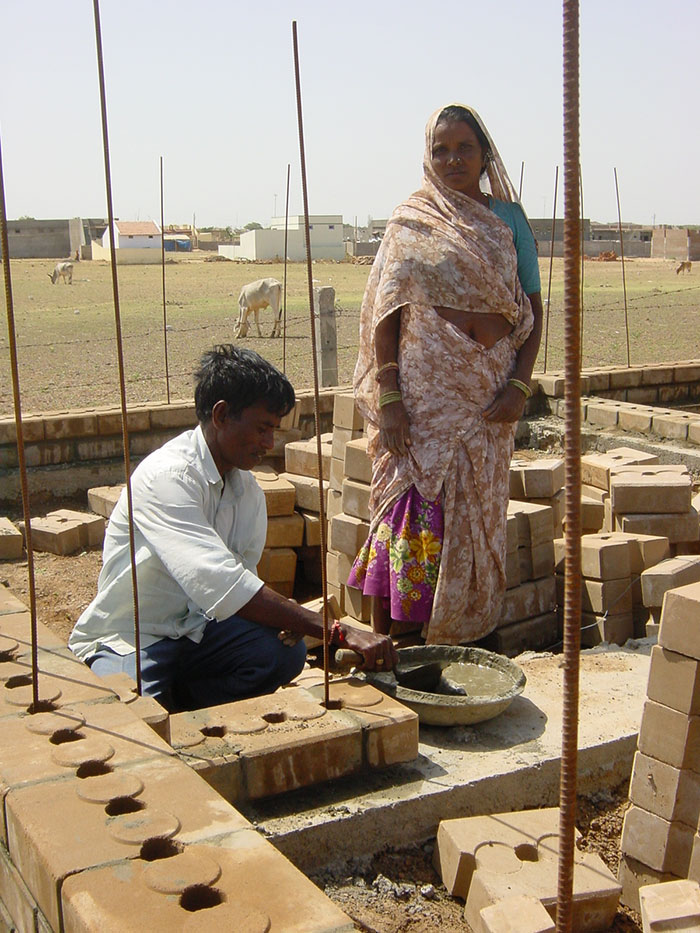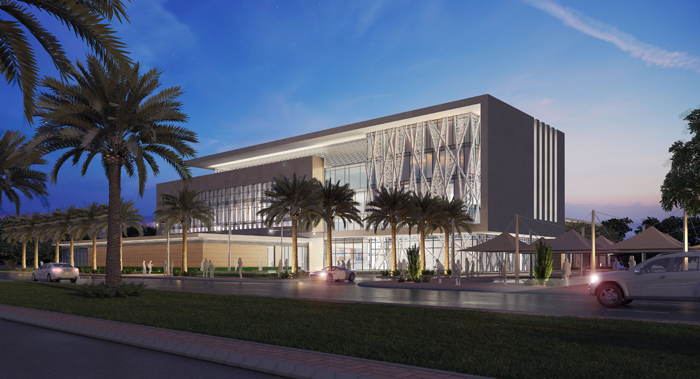Continuous learning is a fundamental part of being an architect. It can take many forms: formal technical training, learning from colleagues, on-the-job research, or even post-occupancy evaluations.
However, when the pursuit of learning goes beyond the conventional you can achieve some amazing results, as is the case for three of our Fellow members: Graham Saunders, Dr David Bonnett and Sandra Woodall.
Graham’s experience in humanitarian relief work, David’s research into inclusive design, and Sandra's work in sustainability couldn’t, on the face of it, be more different. And yet they are united in pushing the boundaries of learning, their original research adding to the sum of professional knowledge.

Until recently Graham held the role of Global Shelter Cluster Coordinator for the International Federation of Red Cross and Red Crescent Societies (IFRC) - Graham’s career is nothing short of extraordinary. It has taken him to extreme humanitarian disaster zones around the world, employing his architectural expertise to address the challenge that all such events have in common: the need for shelter.
Whether it’s negotiating with displaced persons to repopulate Srebrenica after the Bosnian War or rehousing the citizens of Goma in the Democratic Republic of Congo after the Nyiragongo volcano has erupted, the need for shelter persists.
When he first joined the IFRC, he found that there were no evidence-based standards or governance of what to do in these desperate situations. “Coming from a very regulated profession in a very regulated market, the humanitarian world is surprisingly unregulated: anyone could do anything.”
He immediately trained his sights on fixing that. There is now an international standard on shelter and settlements – he was lead author - and a growing understanding of the importance of equitable governance in his sector.
With hundreds of thousands of lives dependent on the efficient, effective allocation of knowledge, skills and resources, the positive impact of his work is enormous.

Although David Bonnett started out determined not to let his own disability limit what he could do or define his career, he soon discovered that in fact there was a dire need in the profession and wider society to acknowledge that the built environment could discriminate unfairly against some people.
His innate curiosity and a revealing series of commissions deflected his until-then traditional career trajectory down a new path. He decided to explore users’ differing needs and, importantly, set about researching what the solutions could be.
He completed one of the first PhDs in accessible design, swapping hearsay for hard evidence. A niche expertise blossomed from that. His practice now has an impressive track record of working on a range of prestigious building projects, many of them of historic importance.
The future for him is in evidence-based practice. “When you really start to ask blind or deaf people or people in wheelchairs what they really want, their answers differ from what the charities who represent those people tell you. That’s controversial.”
He thinks it wrong that so few architects go back to see what worked and what didn’t. Not only does the state of professional knowledge stagnate, it can lead to the unplanned early replacement of buildings, which is unsustainable.

Sandra Woodall’s rise to be one of the leading lights of sustainable design in the Gulf States is unconventional. Starting down a technical building route, she switched to architecture mid-stream, which is no doubt why she comes at the problems of architecture a little differently.
Serendipity eventually took her to Dubai, where she joined Tangram Architects. At the time, Europe was a crucible of fresh thinking in sustainable design. Not so Dubai, although it was undergoing rampant development, with desert cities growing up overnight, and anything was possible.
Sandra could see the potential of sustainable design principles for meeting the challenges posed by such a harsh climate. “Here was an opportunity for the Gulf States to be world leaders in the area, but it took a while for them to see what sustainability actually meant and not to repeat the mistakes of others.”
Simply importing what she already knew, however, wouldn’t work. Instead, she actively investigated the local building traditions for their scientific basis, and combined them with contemporary technologies to create innovative, appropriate, award-winning architecture.
The Gulf States today have taken green design to its heart, recognising its value and adopting it as policy. Sandra can justly claim some small but significant credit for that.
As a professional organisation, the RIBA advocates a culture of continuous learning. It regulates CPD requirements, and strongly promotes the pursuit of post-occupancy evaluation as a critical tool for developing the body of professional knowledge. What better ambassadors could it have than these three remarkable Fellow Members?
RIBA Fellow Membership recognises our inspirational Chartered Members, the sometimes unsung heroes of the profession, who have made a real contribution to architecture, and the community. Find out more and apply to become a RIBA Fellow.









